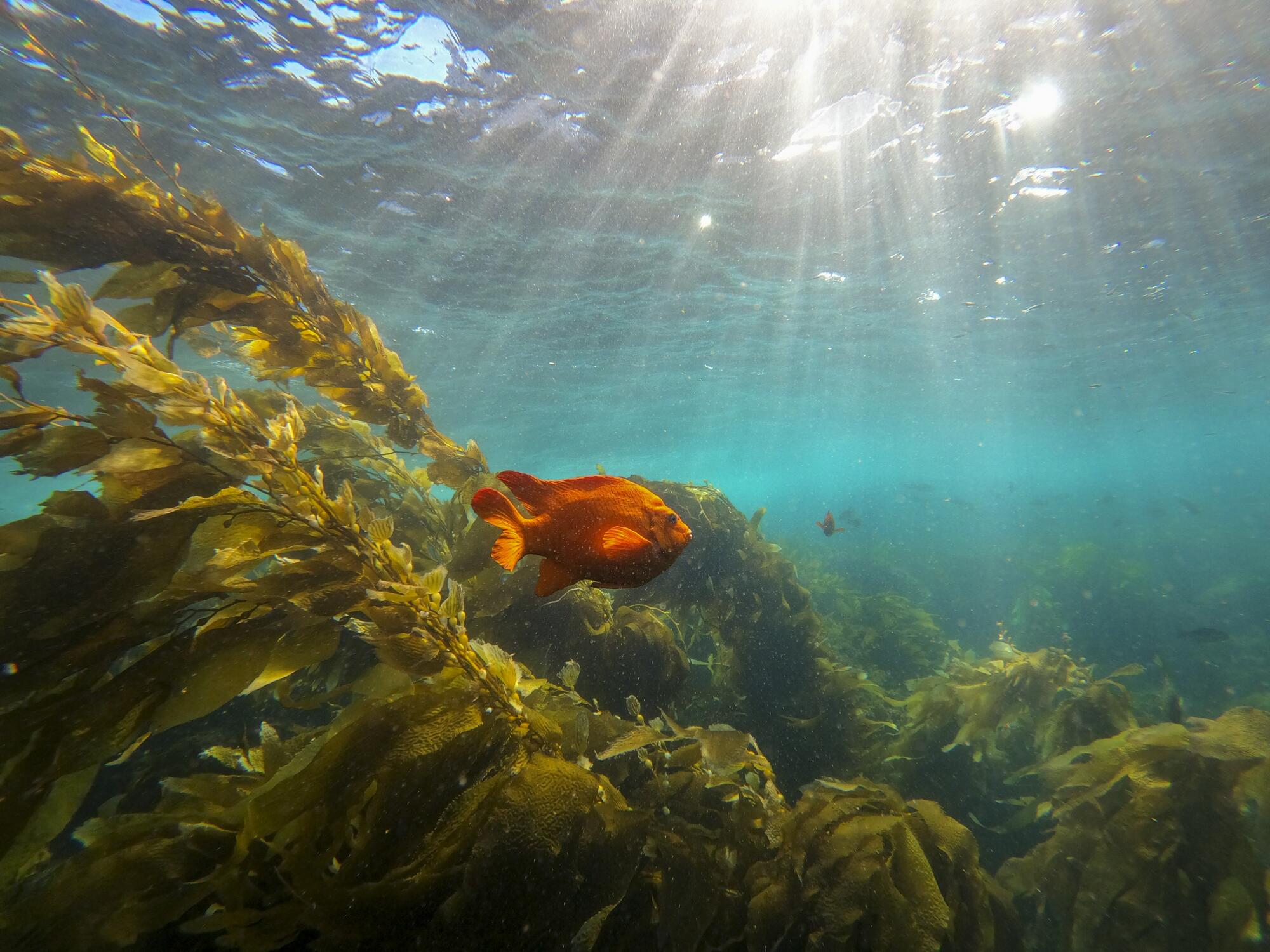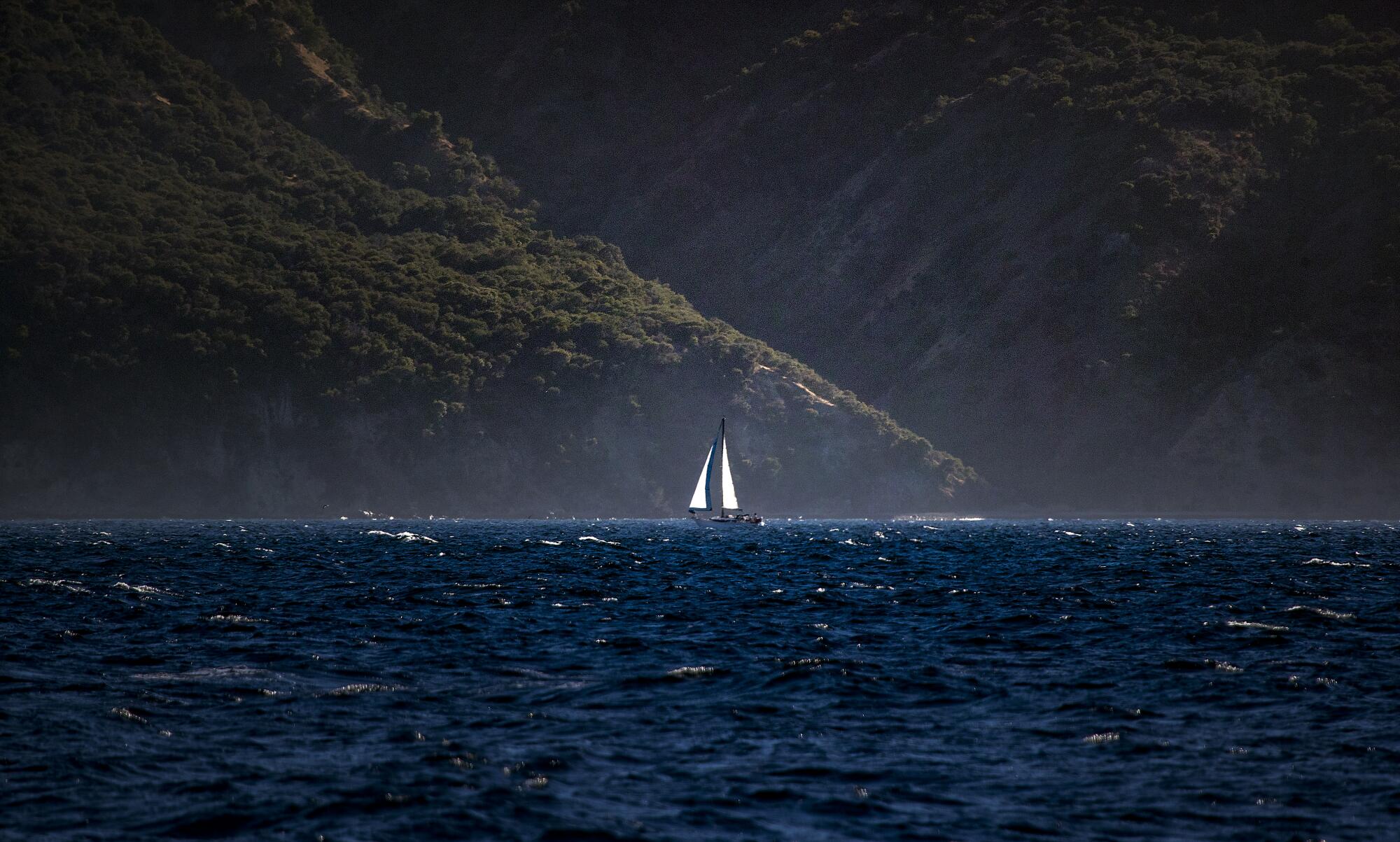-
San Diego sheriff: Migrants did not try to forcefully stop school bus - August 31, 2024
-
One stabbed, another injured in altercation on L.A. Metro bus - August 31, 2024
-
Trump Judge Has ‘Two Options’ as Future of Case Unclear: Analyst - August 31, 2024
-
What to Know About Putin’s Planned Visit to Mongolia Amid ICC Arrest Warrant - August 31, 2024
-
Buying sex from a minor could be a felony under bill headed to Newsom - August 31, 2024
-
Democrat Lawmaker Switches Party to Become Republican - August 31, 2024
-
Misdated Mail-In Ballots Should Still Count, Pennsylvania Court Rules - August 31, 2024
-
Cause and manner of death determined for Lucy-Bleu Knight - August 31, 2024
-
NASCAR Craftsman Truck Series Announces Return To Iconic Circuit In 2025 - August 31, 2024
-
At Pennsylvania Rally, Trump Tries to Explain Arlington Cemetery Clash - August 31, 2024
What did the ocean sound like before humans?
Imagine it’s the early 1900s and you’re a giant blue whale basking in the warm waters of the Santa Barbara Channel, just off the coast of Southern California. What do you hear? Fellow whale songs, murmuring currents, the occasional foghorn, perhaps.
Fast-forward to 2024, and the quiet environment you once called home now sounds vastly different as massive cargo ships churn overhead, slicing through the water with powerful propellers as they converge upon two of the busiest ports in the world.

Aggressive and impactful reporting on climate change, the environment, health and science.
While few land dwellers have given much thought to this shift in ambient marine noise, new research has modeled, for the first time, how the Industrial Revolution and the advent of commercial shipping have turned up the volume in the waters off Los Angeles.
The once-quiet environment of the Santa Barbara Channel is now about 30 times louder than it once was, according to a study published recently in the journal Marine Pollution Bulletin.
Researchers estimated noise levels in the Santa Barbara Channel using acoustic modeling. The black lines represent ships passing through the channel. (Scripps Institution of Oceanography)
The noise can have a profound effect on whales and other creatures that pass through the channel or call it home, many of whom rely on sound and echolocation as their primary mode of perceiving the world around them, according to Vanessa ZoBell, the study’s lead author and a postdoctoral researcher at Scripps Institution of Oceanography.
“Sound is everything to marine organisms,” ZoBell said — particularly because about 90% of the ocean is pitch black during the day, and 100% at night.
“It’s the only sense that a lot of marine organisms have, and noise pollution — specifically for the L.A. region — is dominated by commercial shipping,” she said. “When you’re radiating a bunch of noise into the region, it’s kind of masking that sense that these animals need to survive.”

A Garibaldi swims in shallow waters off Catalina Island in January 2016.
(Allen J. Schaben / Los Angeles Times)
The researchers chose to focus on the Santa Barbara Channel in part because it encompasses Channel Islands National Marine Sanctuary and a foraging ground for the federally endangered northeastern Pacific blue whale.
The study modeled the channel’s soundscape in August 2017, when both whales and heavy ship traffic were present, and compared it with the same area decades earlier — before the influx of commercial shipping transformed the ports of Los Angeles and Long Beach into the two busiest ports in the Western Hemisphere.
They found that before the introduction of vessel cargo containerization in the 1950s, the baseline volume in the channel was about 60 to 80 decibels — a relatively low hum compared to the cacophony heard today. Now, noise levels are up to 15 decibels louder.
“It’s like having a conversation in your kitchen [versus] having a conversation on the side of a freeway with a bunch of semi-trucks,” ZoBell said.
The problem may get worse in the years ahead, the study says, as global containerized trade is expected to continue to increase due to growing consumer demand and expanding global markets. The volume of such trade more than tripled between 1990 and 2021, according to the United Nations Conference on Trade and Development.
Sean Hastings, a policy, information and management officer with the Channel Islands Marine Sanctuary, described the study’s findings as “very significant” and said they drive home the urgent need for slower ship speeds, adjusted shipping lanes and other efforts to mitigate ocean noise and protect wildlife.
“These animals have evolved for millions of years in an ocean that only in the last 150 years — the Industrial Revolution era — has dramatically changed on a pace and on a scale that they haven’t evolved with,” he said.
The noise pollution can reduce an animal’s ability to detect and interpret acoustic cues, including sounds used to mate, feed, travel and migrate, Hastings said. It can also increase their stress.

A lone sailboat cruises at sunset off Catalina Island in August 2020.
(Allen J. Schaben / Los Angeles Times)
The findings are especially important in the Santa Barbara Channel, which is an internationally recognized biosphere reserve, a designated Whale Heritage Area, and one of the most important whale migration routes in the United States. Blue whales and humpback whales typically arrive in the channel around May 1 and stay through December to feed, breed and birth their calves, “and so this is a really important time frame when they’re up here,” Hastings said.
Though divers typically avoid swimming where the ships and whales converge, Hastings said it’s not hard for humans to imagine what the added noise feels like.
“I know when I’m snorkeling or diving and a small boat goes overhead, it’s dizzying because the sound feels like it’s everywhere,” he said.
The Channel Islands can also act as a “shield” that constricts sound within the Santa Barbara Channel, enabling noise to rattle around more than it would in deeper, more open ocean waters, according to ZoBell. It’s one of many factors the researchers had to consider in their acoustic modeling, along with wind speed, temperature and time of year, which can all affect how sound propagates through the ocean.
And though container ships create the most underwater noise, smaller vessels — including fishing boats and pleasure craft — also contribute to the volume, which can affect not only whales but also dolphins, spiny lobsters and some fish.
“It’s a region with a lot of human and wildlife interactions,” ZoBell said.
Ocean noise also isn’t limited to commerce. In recent years, the U.S. Navy has come under fire for testing and training activities involving high-intensity mid-frequency sonar in ocean waters, with the Navy admitting in 2002 that the noise had killed at least six whales near the Bahamas.
In 2015, a federal court approved settlements in two cases brought by environmental groups against the Navy and the National Marine Fisheries Service for deploying sonar testing off the coasts of Hawaii and Southern California, which were again found to harm marine life.
“There’s no easy solution to separate ships and whales and national defense training,” Hastings said. “So … when whales are present, we’re asking ships to slow down. And when and where we can, we’re pushing the lanes into deeper water, we’re expanding areas to be avoided. You see this multi-pronged approach.”
That approach includes a program called Protecting Blue Whales and Blue Skies, run by a coalition of nonprofit organizations, government agencies and industry groups, which recognizes and rewards shipping companies for voluntarily reducing their speeds to 10 knots or slower in the Santa Barbara Channel, as well as other parts of the Southern California coast and the San Francisco and Monterey Bay region.
The slower speed not only helps limit noise but also reduces greenhouse gas emissions and prevents more ships from striking whales and other animals, the group says.
The program’s 2023 season included the participation of 33 global shipping companies, which collectively traveled about 375,000 nautical miles at 10 knots or slower within the speed reduction zones.
The top-performing ships had sound levels 5.4 decibels lower per transit compared with 2016 baseline source levels, the organization reported, adding that “with a reduction in noise pollution, whales can likely communicate easier.”
New legislation introduced this year, Assembly Bill 2298, seeks to expand the Protecting Blue Whales and Blue Skies program across the entire California coast “in order to reduce air pollution, the risk of fatal vessel strikes on whales, and harmful underwater acoustic impacts.”
The shipping industry is also beginning to explore new, greener designs such as electric engines and hydrogen hybrid propulsion systems, which could help reduce sound and provide other benefits including improved air quality.
Though it may be some time before those changes are capable of meeting the needs of the largest cargo ships, Hastings said consumers can ask themselves whether they’re willing to trade slower shipping speeds for better ocean and marine wildlife conditions.
“Can they wait an additional few hours for their favorite shoe or computer or smartphone?” he said. “These are really special places, and we can still get the products we love, and we can do it in a more sustainable way.”
And though the study may help inspire additional changes in the future, ZoBell said it also plays an important role in establishing a clearer sense of the past.
“Now we have a target to get back to, and we know what the natural soundscape is that the animals there have evolved to thrive in,” she said. “I don’t think we’re going get back to that, but at least we have something to strive for.”
Newsletter
Toward a more sustainable California
Get Boiling Point, our newsletter exploring climate change, energy and the environment, and become part of the conversation — and the solution.
You may occasionally receive promotional content from the Los Angeles Times.
Source link













